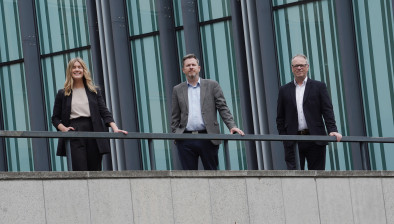Turner & Townsend: Insolvency risk could rival inflation as main threat to construction industry

Andrew Outram
The UK construction sector is set to face the spectre of increased insolvency, exacerbating price rises while rivalling inflation as a threat to successful project delivery, Turner & Townsend has warned.
As inflationary pressure persists, the global professional services business’ latest UK Market Intelligence Report (UKMI) alerts clients to increased construction sector insolvencies which have risen by 72.1 percent year-on-year to Q2 2022.
Turner & Townsend is advising clients to take a pragmatic approach to project and programme delivery to help tackle both inflationary and insolvency threats.
Andrew Outram, director for Scotland at Turner & Townsend, said: “Businesses in Scotland need to be more alert to insolvency risk across their supply chains as the long-term impact of the pandemic begins to sink in, and the fiscal crutches offered by government are removed.
“It’s essential to spot the tell-tale signs of insolvency risk early - those include low productivity, difficulty securing labour or materials, and failure to pay suppliers. To be prepared, build trust and open communication within your supply chain.”
The potential return of rising insolvencies shows economic reality catching up with the sector following the end of the furlough scheme in September 2021 and the end of the temporary easing of insolvency rules in March 2022.
Across the economy, SMEs are most at risk of failure, impacting construction significantly, as 98 percent of construction businesses are SMEs.
Turner & Townsend has also revised its tender price inflation forecasts in the UKMI. While still high, the report’s estimate for 2022 in real estate has been adjusted slightly to 8.7 percent, an uplift from 8.5 percent in Spring’s UKMI. Though sustained higher inflation is still expected to persist, with 4.5 percent forecast for real estate tender prices in 2026.
Across the infrastructure sector the situation is more pressured, with the business raising estimates for 2022 up to 8.0 percent compared with the 6.0 percent forecast in Spring’s report. It’s forecast for this market in 2023 is also higher, at 5.0 percent up from Spring’s 4.5 percent, and remains elevated into 2026’ at 5.5 percent.
Mr Outram added: “Our sector is at the heart of driving forward positive change in the UK – with projects helping us level up the UK, bring forward social value, and achieve the transition to net zero. For this potential to be met, risk in project delivery must be minimised.
“This will take programmatic decision-making that plans for the full lifecycle of projects – looking beyond low-cost bids and instead assessing the sustainability and robustness in the financial credentials of firms and their ability to deliver.”








